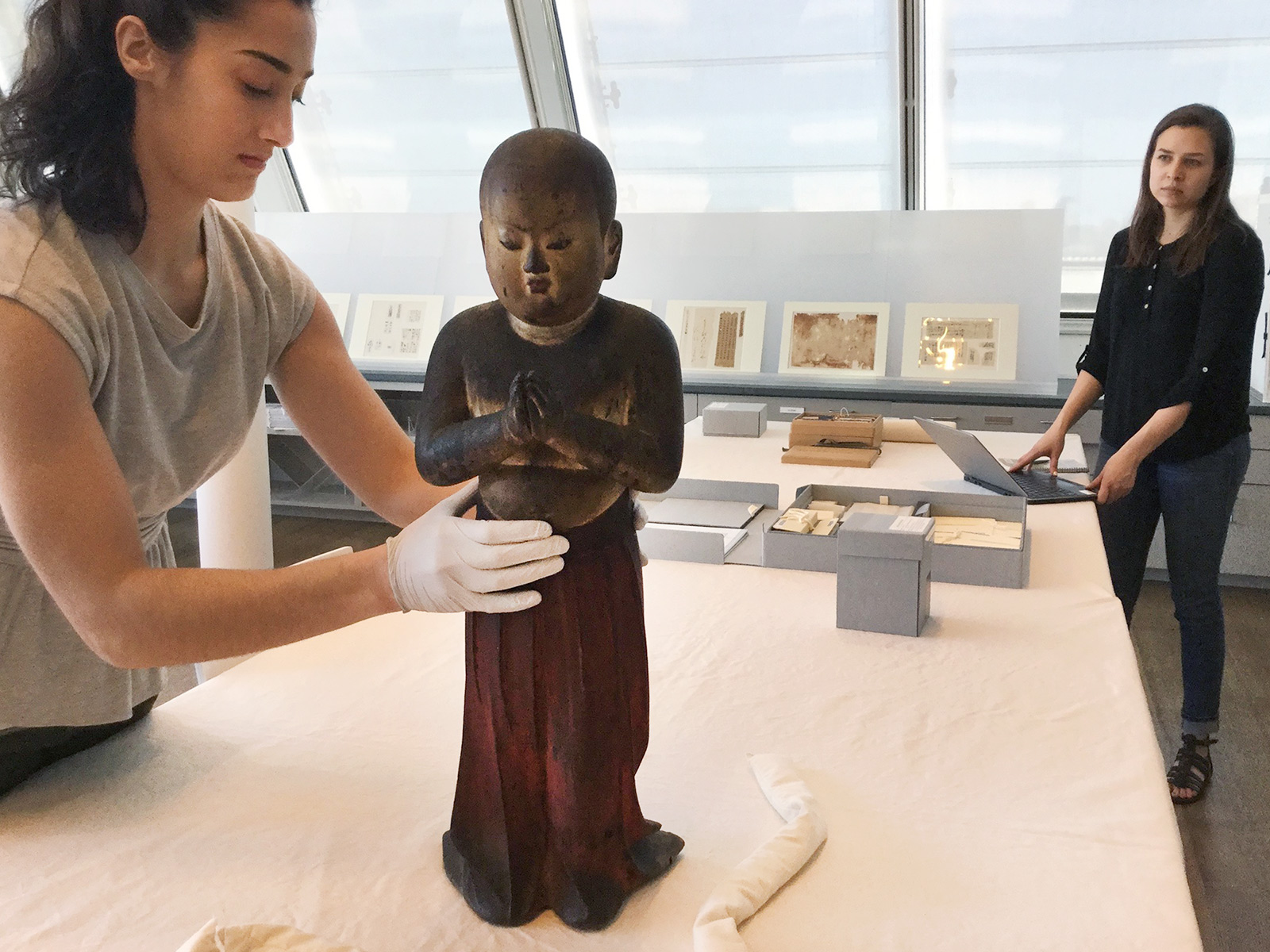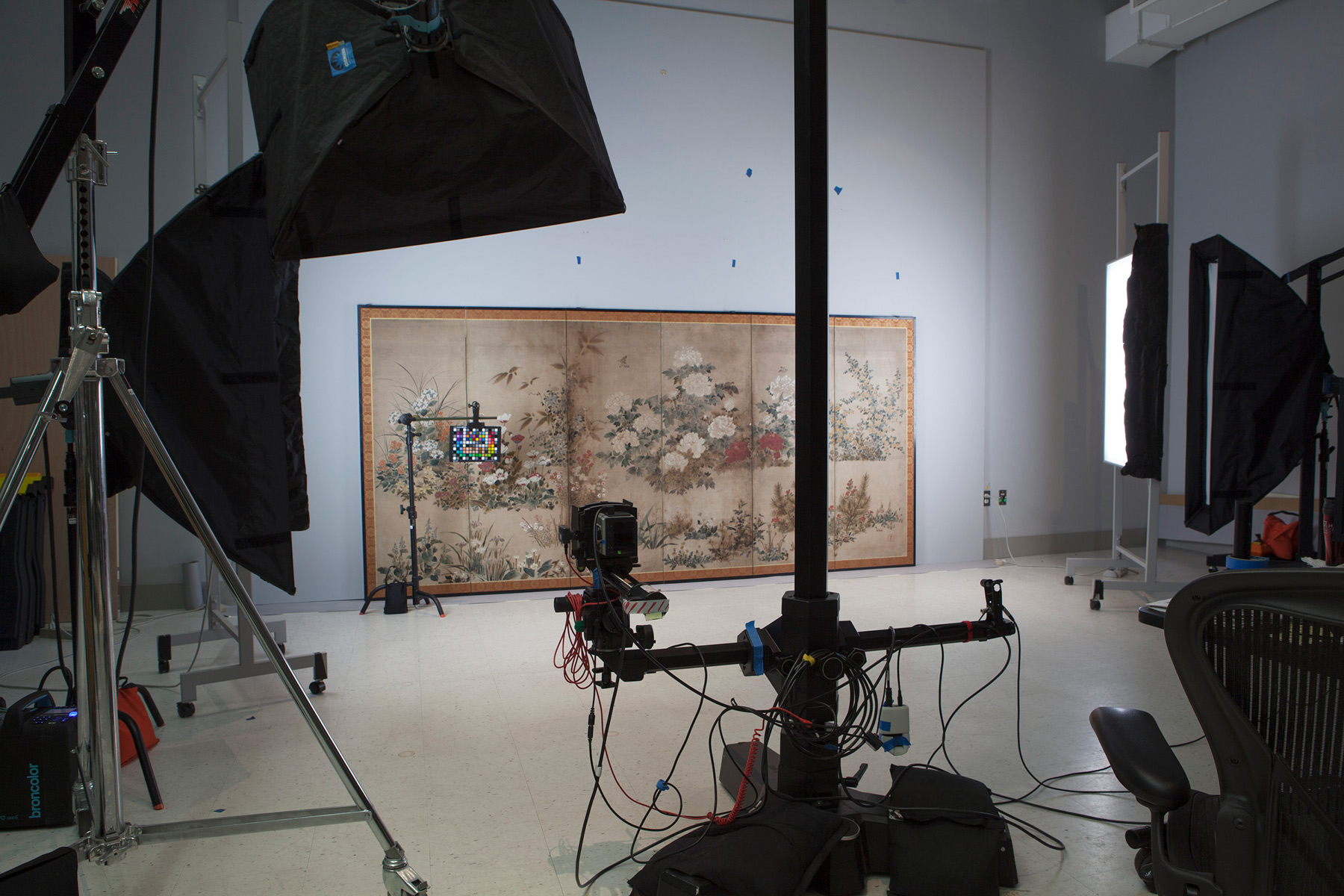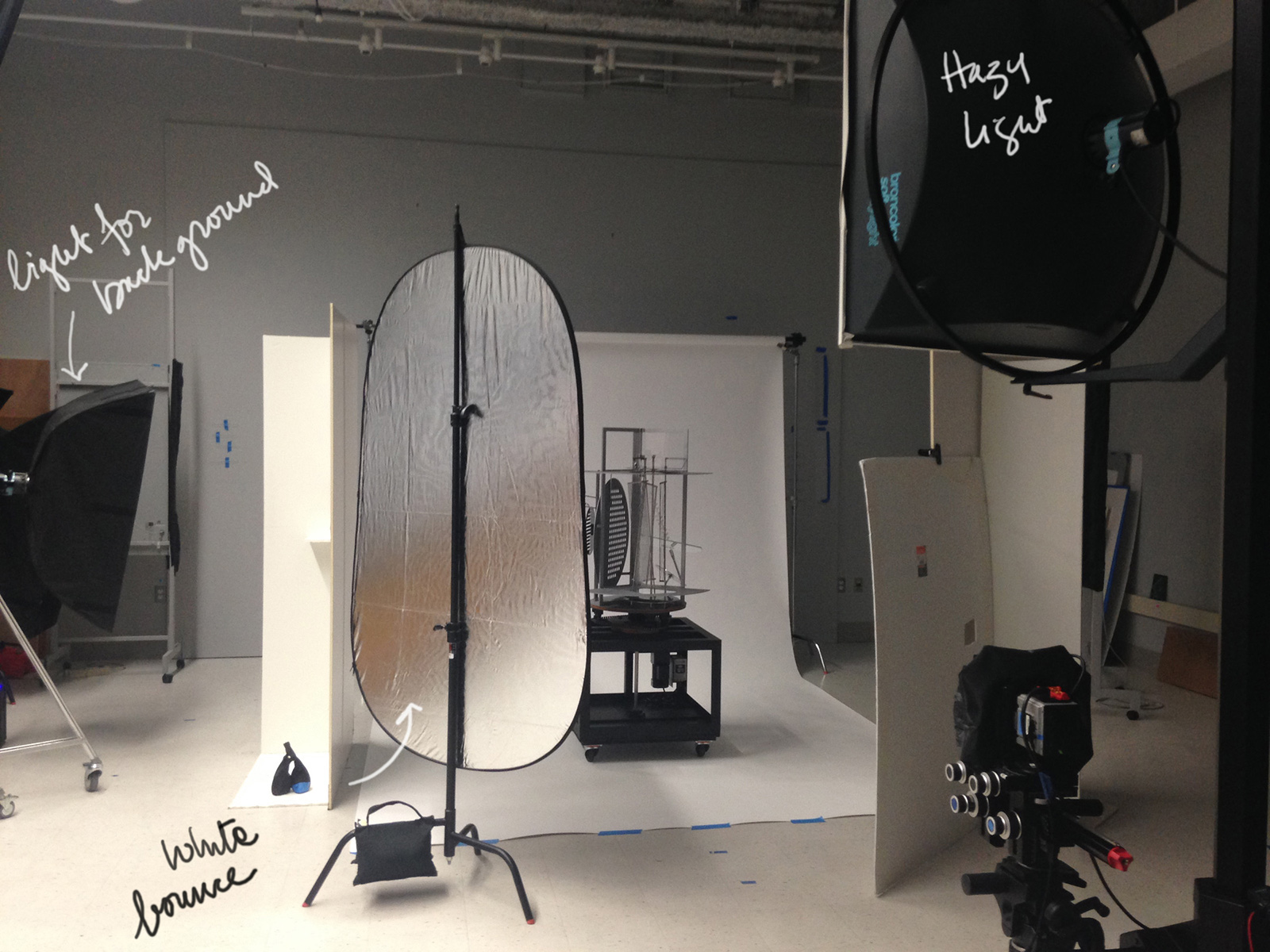It all begins with a request: it may be to photograph a new acquisition, to replace black and white film images with color, or to document the “before and after” of conservation treatments. But the request is just the first step in the process of photographing objects at the Harvard Art Museums.
Art Photography—A Team Effort

The museums have remarkably diverse collections, totaling more than a quarter million objects spanning cultures, continents, and eras. The special task of creating a visual record of these objects—for viewing online, for publishing in new books and articles, and for a variety of other special projects at the museums—falls to staff in the Digital Imaging and Visual Resources department, or DIVR. The team recently filled us in on the multiple steps required for creating high-quality art photography.
Review
Before a requested object can come into the studio to be photographed, it’s necessary to review it in person. Curators, conservators, art handlers, and DIVR staff gather around the object in the Art Study Center to address such questions as: What views are needed to fully document the object? Should there be any detail shots? Does the object require conservation treatment? If so, should photography come later? Does a special mount need to be constructed to keep the object safely in place during photography? Only after thinking through these sorts of questions can DIVR schedule the work to be photographed in the studio.
Photography
The museums’ skilled art handlers deliver the work to the studio and assist with the positioning of the object for the camera. The DIVR photo studio is specifically designed to accommodate the imaging of two- and three-dimensional objects, from small coins to large paintings.
The studio has a wall-mounted copy stand for works on paper, an easel for paintings and large framed works, and a wall for hanging scrolls and screens. Once the object is safely in place, the photographers determine the best setup for each object, aiming for an accurate representation of the work using lighting, background choices, camera angle, and lens choice, among other decisions.
A variety of studio lights, a 50-megapixel camera, image-stacking software (which allows photographers to overlay several images to get the precise result desired), and image-editing software are all deployed to achieve an image that best demonstrates the unique materiality of each object.
Once the images have been processed and adjusted, they are handed off to the post-production developer for deposit and archiving.
Depositing
The highest quality version of each image (called the master) is stored in the Harvard Library Digital Repository Service (DRS), a managed long-term preservation repository. A derivative file is created for each of those images and is assigned a web address that we can then link to in the museums’ collections database, called TMS (The Museum System). TMS contains information about the physical objects in our collections as well as information about the images, much of which is viewable on our public website. Visitors to collections online can access and download images directly—they are even suitable for PowerPoint presentations! They can also zoom in to an object image to see extremely fine details.
Permissions
Once images are online, the public can request digital copies of the images and permission to publish them directly from our website. Such requests are vetted by DIVR and curatorial staff for object cataloguing accuracy and image quality. We receive hundreds of publication requests each month from all over the world, and in the spirit of promoting scholarship, we do not charge a fee for the use of our images. These external publications help highlight our collections not only by showcasing our best objects, but also by contributing new research to objects that have been understudied.
In addition to granting permission and supplying high-resolution digital images, DIVR also determines and catalogues in TMS the copyright status of each object in the collections. We also offer guidance on copyright and fair use by helping both staff and external scholars decide how best to legally use an image in their project.
The digital images that DIVR creates now take their place alongside images made in earlier times, on color transparency film, 8 x 10 sheet film, and even glass plate negatives. Each new development in imaging technology gives birth to a new understanding of works in the collections, opening up exciting opportunities for discovery, research, and art appreciation—now and in the future.
The entire DIVR team contributed to this story. They are Lian Bruno, DIVR Coordinator; Isabella Donadio, former Rights and Licensing Specialist; Katya Kallsen and Mary Kocol, Fine Arts Photographers; and Katie Kujala, Post-Production Developer.






